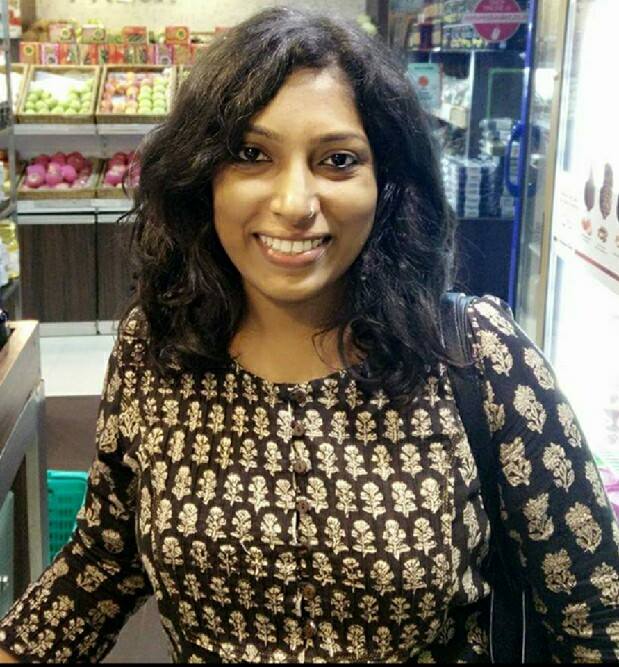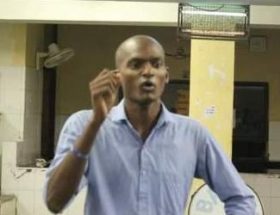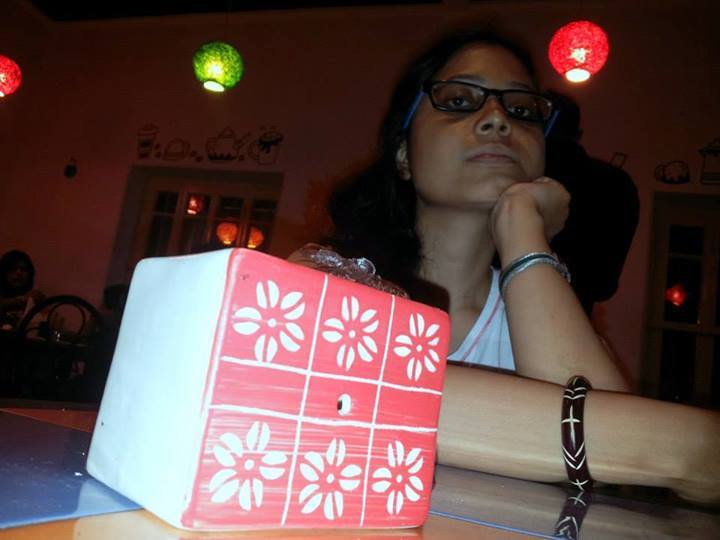Sukanya Shantha
 On Friday, a friend and I walked into a movie hall to watch an American romantic musical, La La Land. Enticed by the cinematic beauty and the dreamy two hours spent in the cinema hall, I walked out feeling empathetic towards actor Ryan Gosling’s character Sebastian, a white American, who among several things is also a savior of Jazz, a music genre birthed by the descendents of the enslaved African people and informed by their lived experiences.
On Friday, a friend and I walked into a movie hall to watch an American romantic musical, La La Land. Enticed by the cinematic beauty and the dreamy two hours spent in the cinema hall, I walked out feeling empathetic towards actor Ryan Gosling’s character Sebastian, a white American, who among several things is also a savior of Jazz, a music genre birthed by the descendents of the enslaved African people and informed by their lived experiences.
Nearby, at the KC College auditorium, similar tempo was set where hundreds of students, activists and academicians gathered to hear Dr. Angela Davis, a scholar, author, feminist, abolitionist and an activist who works on liberating political prisoners and those in exile. Dr. Davis was in the city to speak at the 8th Anuradha Ghandy Memorial lecture on the topic “Black Lives, Dalit Lives, histories and solidarities”. Two days earlier, Dr. Davis and Dr. Gina Dent, an associate professor of feminist studies at the University of California had made a deeply insightful presentation on “abolition feminism” at the Tata Institute of Social Sciences. They presented an extremely nuanced understanding of prisons through a feminist perspective. Their decades of engagement was evident in every word they spoke. Somewhere in her talk, Dr. Davis modestly clarified that she has a limited understanding of the caste struggles in India and sees one very crucial commonality between the black and Dalit struggles- a fight for dignity.
But the lecture at K C College was different. It was organized to speak exclusively on ‘Black lives, Dalit lives, histories and solidarities’. So it is only a reasonable expectation that Dr. Davis would be acutely aware of the politics of anti-caste movement, its strong articulation against appropriation of its struggles, the culture and the strong history of Ambedkarite politics. Instead, she chose to speak at a space where right from conceptualizing to organizing the lecture, every stage of planning had taken place within the savarna minds of left ideologues. Majority of the crowd gathered there and those invited on the stage only affirmed it further.
The composition of civil society in cities is more or less homogenous. The liberal, secularist, leftist savarnas mark their presence in abundance at every event to show “solidarity”. Essential as it may be, the environment it creates also restricts the scope for an alternative narrative and a constructive political dialogue. Here too, the atmosphere was a strictly controlled one. The stage had five persons, Bernard D’mello (Deputy editor, EPW), Kumar Ketkar (senior journalist), Chandra Talpade Mohanty (Professor, Syracuse University), J V Pawar (co-founder of Dalit Panthers, a revolutionary anti-caste organisation) and Dr. Davis.

Skeptical, I already was, but still hoped that an attempt would be made to appear “politically correct”, if not be one. But the lopsidedness of this event only made it evident that even this appearance was inconsequential for their politics. For an event organized to talk on the issues of Dalits and the Blacks, they had one Black and one Dalit person on the panel. And the rest, of course were the savarna intelligentsia. None of them are known for their profound contribution on the issues of caste or race. Then why did they qualify to be on the stage? Let me try to comprehend this. D’mello, because is an old comrade? Mohanty, as she is an old friend? Ketkar, as he is the face of city’s “secular” journalists? But what about their work in the anti-caste struggles? Most spaces, be it universities or private ventures, have always operated within the sphere of friendship and likeness (read caste). Here, too, this association was kept intact. Also, the questions asked by the panelists had no value to add to the anti-caste discourse. D’mello’s question focused on the status quo maintained by caste, without seeing the inherent irony in his question. Mohanty talked about solidarity and referred to a ‘delegation of women of colour and indigenous communities’ that she was a part of and had visited Palestine in 2011. Brahmin academics with every social and economic capital at their disposal very commonly invoke the ‘shortcomings’ of their colour when in a white land. The third panelist, Ketkar, refused to talk on caste, race or solidarity, instead chose to question Dr. Davis on US politics. The event organized to talk on caste did not have a single utterance of the most conspicuous words like brahmin or brahminism anywhere in those three hours.
For a group which claims to have had a ‘long legacy’ of working for Dalit and Adivasi rights, how is it so difficult to make friends and find fellow comrades beyond their own caste identities? And worse, exhibit this shortcoming so unabashedly by presenting an extremely self-indulging face, without an iota of self-doubt at an event organized to speak on caste! Not that the left radical groups lack members from the Dalit Adivasi Bahujan communities. Left activists and lokshahirs like Sambhaji Bhagat and radical left activist and ex-political prisoners like Sudhir Dhawale and Angela Sontakke were also present in the audience. These names are mentioned only to point out the presence of leaders from Dalit community at the event. It is nowhere an exhaustive list. Then why were they not allowed a space on the dais? I am consciously using the word “allowed” here as nothing of that evening appeared democratic and critically thought out.
The all English-speaking savarna panel (excluding Dr. Davis) had Pawar, as an odd man out placed between them. He seemed to have been chosen more for his representational value than for his role and contribution to the anti-caste struggle and as a co-founder of Dalit Panthers. The event not just denied the struggling community its space, but also negated the existence of the rich cultural history of the bahujans. Sunil Shanbag, brother of Ghandy while inaugurating the event rued about the ‘absence’ of art in the movement that had existed in the 60s. By saying this he only exhibited his gross ignorance of histories and cultures of the Ambedkarite movement which thrives strongly in every Ambedkarite household (read Pradnya Jadhav’s article: Bhima’s force shall keep growing…!). And this is not one of its kind slip up. Media, especially the English language, has mastered the art of dissing Ambedkarite politics for long now. Even in the most unrelated arguments, they are known for inserting a line on how the Dalit politics has failed or has “lost its steam” (sample ref. 4).
It is possible that the high turnout at Dr. Davis’ lecture could have made it difficult to have an interactive session with the audience towards the end. But this cannot explain the control that was wielded by the organisers on deciding the kind of questions that Dr. Davis would answer. The compere said that the committee backstage had “painstakingly” selected just four out of 60 questions posed by the audience. I was a fortunate one to have had my question “chosen”! To the question on the acceptance of white solidarity in the black movement and their meddling in the black spaces, Davis responded that finally the whites have learnt to accept black leadership. Something that the savarnas on a constant solidarity spree need to learn!
Through this painstaking exercise, another question that the committee chose was on ‘ways to deal with patriarchy within the Dalit community’. Just for records, this question was chosen over another, rather the most pertinent question, on why the panel did not have a single Dalit woman for discussion. Savarna feminists have long been known to address gender question without the utterance of the word ‘caste’ or problematizing their own locations, something that Anu Ramdas has eloquently countered in her article ‘Unpacking ‘Fulminations’: Caste and Patriarchy‘.
In all this display of solidarity, which played out dot on the expected lines, what was least expected and rather disappointing was Dr. Davis’ lack of inquiry of the space from where she chose to address the issue of caste and express her solidarity. In what appeared (I may be wrong here) like a pre-decided outline for the lecture that evening, Dr. Davis, although generously invoked Ambedkar and Phule, her speech had no mention of other leaders, most importantly the Dalit women leadership. Especially when formidable forces like Radhika Vemula has been at the forefront fighting for justice. This I point out also because Dr. Davis has always been critical of the lack of space for women in black politics back home. An academic of her stature and with such a strong political view against appropriation and subordination, I am unable to fathom why her speech did not invoke a single Dalit Bahujan woman leader’s name. And more so, when she could generously speak about Ghandy’s work in Jharkhand and Sharmila Rege’s academic interventions against caste.
To invite clan members and discuss caste as if it were located somewhere in Mars is a quintessential savarna approach. But this was not expected of someone who in more than 40 years of her political engagements refused to be co-opted.
From the savarna La La Land of ‘save Dalits’ politics, I returned with an increased feeling of indifference, more than ever. Waharu Sonavane’s poem ‘Stage’ resonated in my mind all through.
We do not go to the stage
Neither were we called.
We were shown our places,
told to sit.
But they, sitting on the stage,
went on telling us of our sorrows,
our sorrows remains ours, they never became theirs.
~~
References:
1) http://www.dalitweb.org/?p=939
2) http://roundtableindia.co.in/index.php?option=com_content&view=article&id=8879:bhima-s-force-shall-keep-growing&catid=119:feature&Itemid=132
3) Waharu Sonavane, a leading young Adivasi activist of Shramik Sanghatana wrote this poem ‘Stage’ years ago to express his angst against the non- tribal, savarna leadership that refused to acknowledge the Adivasi community’s struggle in the anti- dam movement. http://www.narmada.org/debates/gail/gail.open.letter.html
4) http://indianexpress.com/article/india/doanld-trump-without-organising-people-no-movement-will-be-relevant-us-activist-angela-davis-4427536/
~~~
Sukanya Shantha is a Bombay based independent journalist. This article, she says, has been written with an acute understanding of her non- Dalit caste location and her learning from Ambedkarite movement. This article is an outcome of discussions and feedback received from her friends Swati Kamble and Rajesh Rajamani.










